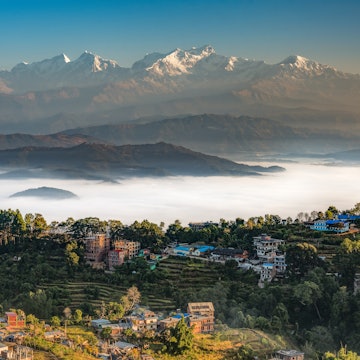
I’m traveling to India, is cash or credit card better to use there?

Dec 1, 2023 • 4 min read

You can’t go wrong with cash in India © Bloomberg via Getty Images
In this series, Lonely Planet’s team of writers and editors answers your travel problems and provides tips and hacks to help you plan a hassle-free trip. When it came to a question about India, we knew Mumbai-based LP editor Akanksha Singh would have the answer.
Question: I am traveling to India next month and have heard conflicting advice on carrying cash versus a card. Do most places accept (foreign) credit cards or do I need to have cash on me? Also, is it best to bring dollars or euros with me, or to withdraw cash from ATMs?
Akanksha Singh: Money is a funny business in India. It wasn’t until a few years ago that the country moved away from a culture of corner shops tossing in a few sweets or chewing gum with your groceries if they were short on change. (A digital payments service called Paytm even launched an ad centered around this “sweet change.”)
Today, you’ll frequently see QR codes for cashless payments through services like Paytm or Google Pay on street side stalls, at temples and in auto rickshaws. In Bengaluru, India’s tech hub, you’ll even see roadside chai vendors who accept crypto.
All this is to say: it depends on where in India you’re traveling, and what you’re expecting from your trip. Here are a few points to consider as you plan.

Cash is king across the country
For the most part, you can’t go wrong with cash in India. Despite continued efforts to go “cashless” (especially during the pandemic), it’s rare for places not to accept cash.
If you’re planning on buying cash at a foreign-currency exchange before you leave for India, note that most foreign travelers are only allowed to import ₹25,000 ($300) in cash.
On the other hand, if you’re planning on converting currency after you arrive in India, be sure to avoid unauthorized outfits once you’re outside the airport (as always, exchange rates within the airport are weak, with higher fees). Sidestep this by heading to an established local bank; India’s reserve bank allows such institutions to buy or sell foreign currencies legally. HDFC Bank, Axis Bank, ICICI and the State Bank of India all deal with a range of currencies and offer competitive rates.
You can also withdraw cash from ATMs using a foreign card. Most ATMs will accept Visa and Mastercard, and a few will accept American Express and Diners Club, too. Just be warned that ATM cash withdrawals often come with high fees, and are subject to a variable withdrawal limit set by the local bank. For most banks, this limit is usually ₹10,000 ($120) per day.

Big cities offer more cashless options
Cashless payment options do exist, but they’re almost always limited to bigger cities. Moreover, these options are hit or miss owing to ever-changing government policies that often leave travelers frustrated.
Most restaurants and bars will accept Visa and Mastercard over Amex and Diners Club. Virtual-card acceptance is low, so you’ll need a physical card – and thanks to an ongoing stalemate between Apple and the Indian government, Apple Pay is a no-go.
Your home-country Uber account should work seamlessly in India – but once in the country, it’s impossible to set up a new Uber account (or one with its Indian competitor Ola) using an international card. Similarly, online transactions using an international card are a gamble in India. This includes transactions on websites such as food-delivery platforms Swiggy, Zomato and Amazon.
Opt for a combination of travel cards, cash and UPI for seamless travel
The good news is travelers are now allowed to make payments using UPI (India’s United Payments Interface), and several companies – including Wise and Revolut – offer travel cards that will work in India with lower transaction and withdrawal fees. (Note that you can’t hold rupees in your Revolut account, but you can spend in rupees on the ground in India.)
If you’ve got some cash on you in addition to this, you’re all set.

Money really isn’t everything in India
For the most part, Indians are generous people (as an Indian, I can make this sweeping generalization!), and I’ve gotten by on the kindness of strangers here more times than I care to publicly admit. There’s an entire culture and way of thinking built around the idea that our financial transactions are about more than just exchanging currency for something in return. They’re human.
Just the other day, I was out for a walk sans cash when a roadside florist insisted I take home some orchids I called pretty in passing. “Pay me back whenever,” said the vendor.
I paid him back the same day – but my point is that people here are kind and understanding when it comes to money-related things. I wouldn’t take anyone’s kindness for granted, obviously – but don’t let limited payment options put you off traveling all over India, either.















